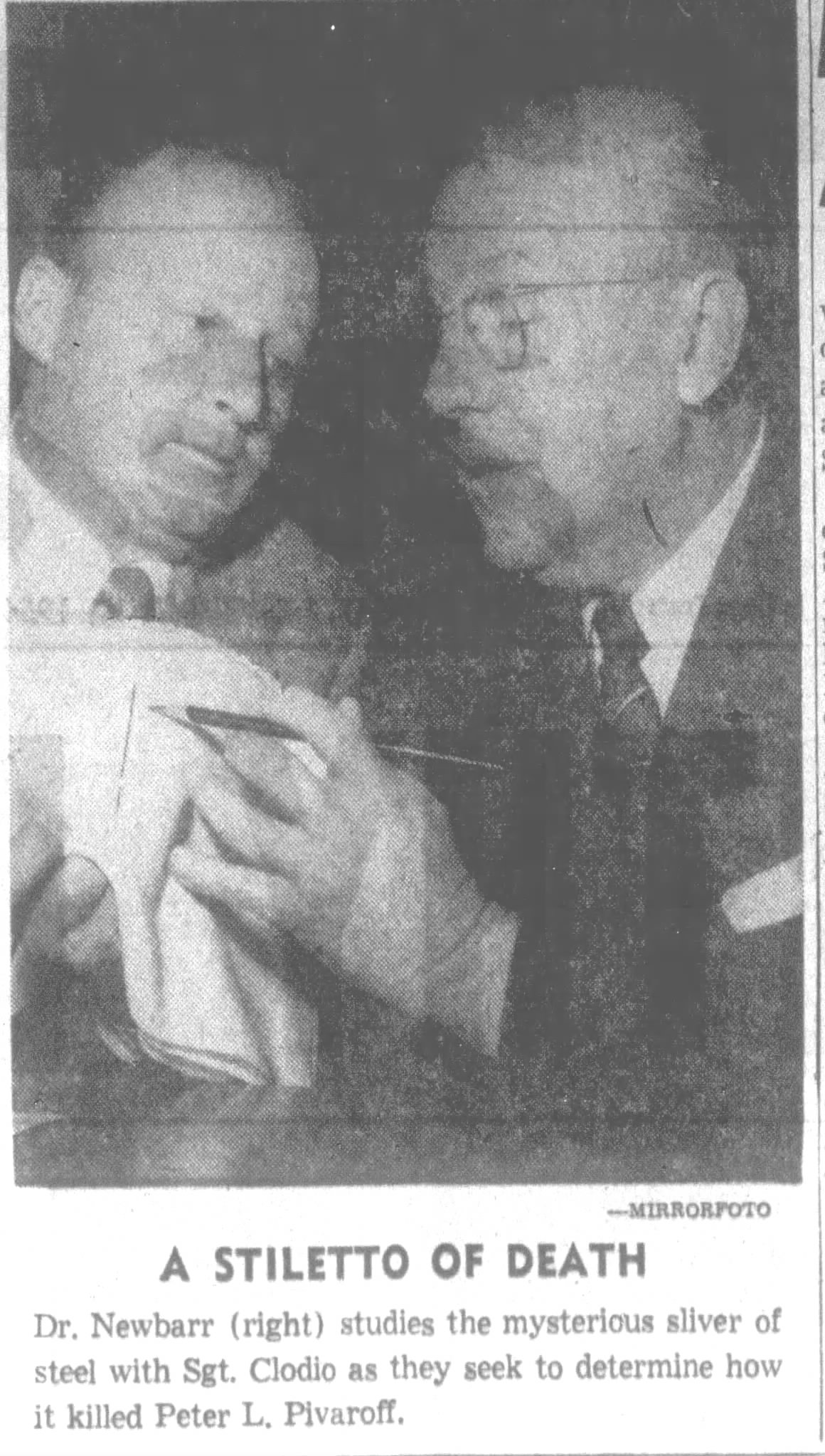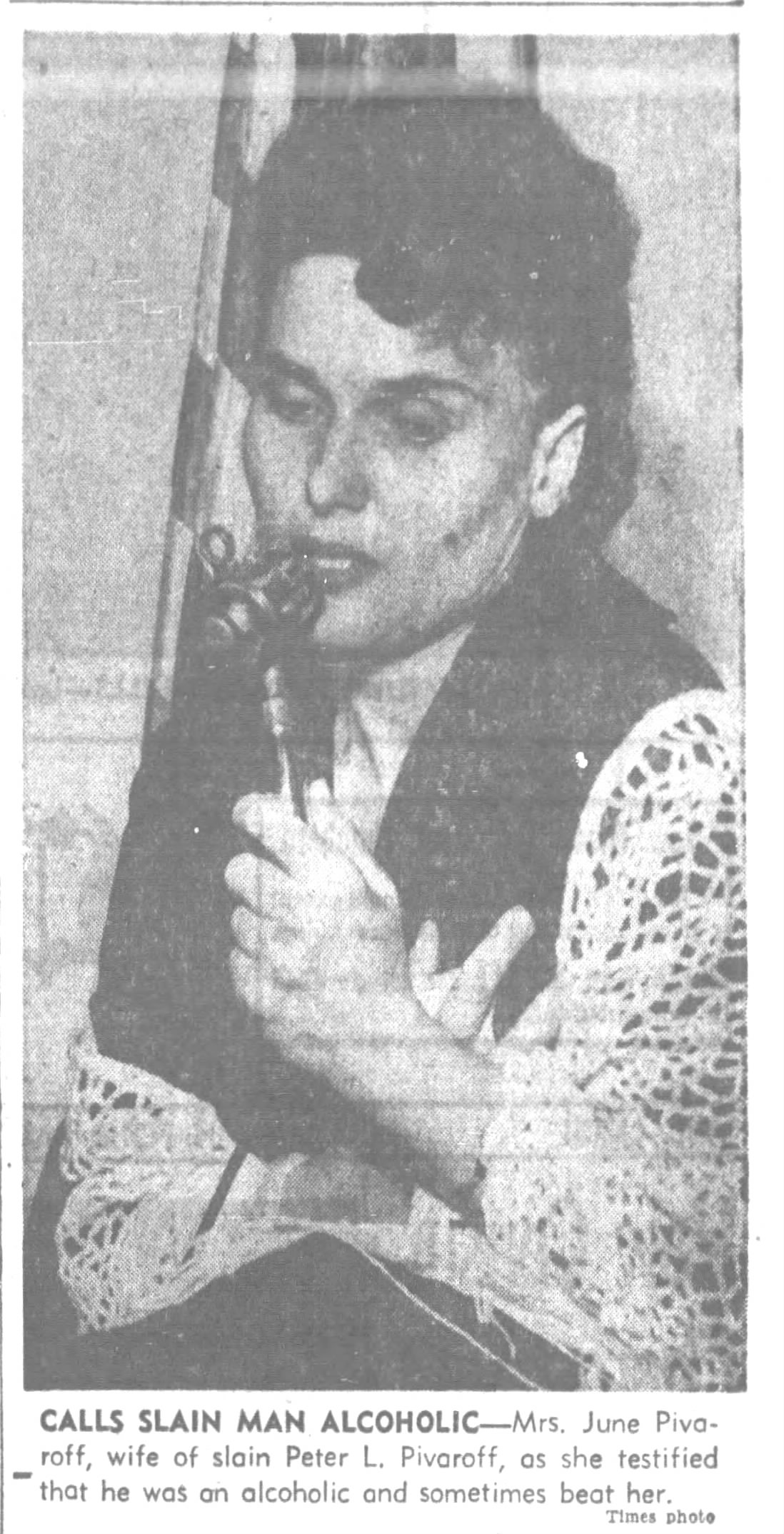Los Angeles has long given refuge to those seeking religious freedom. Among the groups who settled in Boyle Heights, east of downtown, were Russian Molokans. Molokans are a dissenting sect of the Russian Orthodox Church. Similar in some ways to Quakers and Mennonites, Molokans are pacifists and shun alcohol. Think Quaker or Mennonite, and you’ve got the idea.
Thirty-five-year-old Peter Pivaroff, born in 1918, in Arizona, to Molokan parents, may have strayed from the core beliefs of his faith. In 1943, he enlisted in the military. By early November 1954, he was on a serious bender.

On Monday, November 8, Peter experienced chest pains. The pain got so bad his wife, June, took him to Lincoln Heights Receiving Hospital. They admitted him at 11 p.m. for treatment of a heart ailment and alcoholism. Hours later, his condition continued to deteriorate. They transferred Peter to Lincoln Hospital at 443 S. Soto Street for muscular spasms of his heart. Doctors took x-rays of his chest. When the x-rays disclosed a 3-inch-long needle in his heart, they were stunned. Peter died at 3:00 a.m. The attending physician at the hospital refused to sign a death certificate. The presence of the needle was alarming.
Autopsy surgeon, Dr. Frederick Newbarr, said they found a second puncture mark between the seventh and eight ribs and it was, “undoubtedly by the same instrument.” The puncture was about two inches deep. Dr. Newbarr called Peter’s case, “one of the most unusual cases I have seen in thousands of autopsies.”

Police Lt. Fred Laughlin said the lab would conduct microscopic tests to see “if something like a thimble or a pair of pliers were used to push the needle into the heart.” Homicide detectives R. L. Clodio and William Ojers took June to the Hollenbeck Station for questioning. She had little to offer. She said Peter gave her no explanation for his pains. “It was almost like he had amnesia.”
How did the needle get into Peter’s chest?
One explanation came from his ten-year-old daughter, Diana. She said she borrowed a long needle from a neighbor in October to work on a Halloween costume; then it went missing. Diana said the needle from Peter’s chest resembled the one she misplaced. Is it possible Peter landed on it and was so inebriated he never noticed?
The murder theory took a backseat when they discovered a doctor at Lincoln Hospital made the second puncture. Police speculated Peter’s history of alcohol abuse may have caused him to kill himself.

At the coroner’s inquest, Dr. Qualia testified he treated Peter for coronary thrombosis. When the treatment failed to produce results, the doctor called in experts for a consultation. They ordered x-rays, and that is when they saw the needle. It was not driven into his chest, entered from the armpit and pierced the center of his left breast and penetrated skin tougher than most other parts of the body.
Dr. Qualia said, “The tiny spot where the needle went in looked like a mole or a freckle. There was no bump or other surface indication that it had penetrated the skin.
The coroner’s jury determined Peter’s death was a homicide committed by a person or persons unknown. The police had no viable suspect. June testified about Peter’s out-of-control drinking and said he sometimes beat her. June had a motive.
To clear herself, June voluntarily submitted to a lie detector test. Lt. Fred R. Loflund, in charge of detectives at Hollenbeck Division, said June answered all questions honestly. She had no idea how the needle got into Peter’s chest.
Despite passing the lie detector test, the coroner’s jury urged police to find Peter’s killer. Investigators insisted Peter either committed suicide or unintentionally jabbed the darning needle into his heart while drunk.
With the police and the coroner’s jury at odds over Peter’s death, the district attorney’s office weighed in. Deputy District Attorney Aaron H. Stovitz said the facts did not warrant “under any circumstances the issuance of any criminal complaint.” He said the investigation did not reveal a suspect. He left the door open for the future by stating if evidence turned up later, they would “reconsider the matter.”
What do you think happened to Peter?
